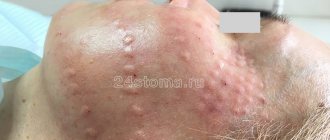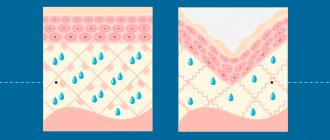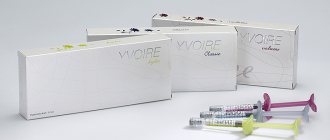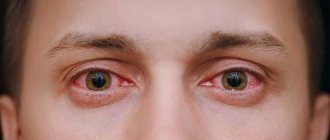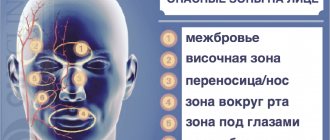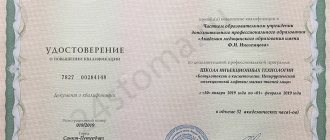Hyaluronic acid versus humans – a history of complications
Over the years, the extent and type of complications from hyaluronic acid (HA) use have changed greatly.
Historically, the initial problem was the unsightly effect of the treatment, and to correct the situation it was enough to dissolve the acid with a special enzyme. The main problems were too much acid injected, the wrong injection site, or the wrong density of the drug. The result was, for example, deformation of the lips, displacement of the preparation, and a caricatured facial expression.
With the advent of a large number of hyaluronic acid preparations and different manufacturers, so-called early allergic reactions began to occur more and more often. Some may be surprised by the very fact of allergies after treatment with hyaluronic acid, which is considered biocompatible with HA in human tissues.
Yes, HA is biocompatible, but the drug is obtained using biotechnology, in which the acid is produced by bacteria. And if it is poorly cleared of bacterial cells, it turns into a strong allergen. Allergies are usually caused by little-known or counterfeit drugs, during the production of which there is no question of high-quality cleaning.
For some, such hyaluronic acid will not give a reaction - such a patient is lucky. And someone may develop severe swelling or even anaphylactic shock. Therefore, self-respecting doctors never use time-untested means. Even if the patient wants to take a risk and is ready to sign consent to the procedure.
Swelling after injection of hyaluronic acid
Currently, cosmetologists are seeing more and more problems after the injection of hyaluronic acid as a result of late complications, that is, those that occur 3-5 months after the injection of the acid. Such complications are difficult and time consuming to resolve.
Botox: contraindications to the procedure
Botox injections are a popular cosmetic procedure designed to cleanse facial skin of facial wrinkles. The Botox injection procedure can only be performed in medical institutions that have the appropriate license. Before administering botulinum toxin, it is necessary to ensure that the patient has no relative (temporary) or absolute contraindications.
Relative contraindications
At the first visit to a cosmetologist, the patient should tell the doctor in detail about previous diseases and operations, about individual reactions to cosmetic procedures, as well as about all medications, sports nutrition and nutritional supplements that she takes. Taking certain medications is a relative contraindication for Botox injections. These include:
- Tetracycline antibiotics, sulfonamides, macrolides, other antibacterial drugs.
- Non-steroidal anti-inflammatory drugs that affect the blood coagulation system (ibuprofen, acetylsalicylic acid).
- Direct (heparin) and indirect (warfarin) anticoagulants, antiplatelet agents.
If you are taking any of the medications listed above, Botox injections are possible only after you have completely stopped it. Moreover, at least two weeks should pass between the course of antibacterial therapy and “beauty injections”. If you are taking substances that affect blood clotting, botulinum therapy is carried out after normalization of hemostasis indicators, which are assessed by laboratory tests (prothrombin index, coagulogram).
Some components of dietary supplements may affect the effectiveness of the anti-aging procedure. Women who take any dietary supplements should inform their cosmetologist about this.
A relative contraindication to the procedure is the presence of signs of an inflammatory process on the facial skin: redness, rashes, swelling. Exacerbation of herpes labialis is another common temporary limitation to the administration of botulinum toxin. Injection rejuvenation is possible only after complete restoration of the skin. Patients with a history of herpetic infection, but without manifestations of viral activity, are prescribed preventive antiviral therapy before the session.
A cold, flu or acute infectious disease is also a temporary limitation to Botox therapy. It is not advisable to do Botox injections during a seasonal exacerbation of allergic rhinitis. It is also not recommended to get Botox injections at the beginning of your menstrual cycle.
Absolute contraindications
Any injection and hardware cosmetology procedures are contraindicated for patients with cancer, regardless of the location of the tumor process. Severe somatic diseases in the acute stage, that is, diseases of the hepatobiliary, respiratory, urinary or digestive systems, are also a contraindication to cosmetic procedures. During the period of remission, anti-aging injections are possible after consultation with a specialist and laboratory and instrumental diagnostics.
Bleeding disorders are another absolute contraindication to Botox therapy. The cause of disruption of the hemostatic system can be either a hereditary pathology (for example, hemophilia) or an iatrogenic disorder caused by taking medications. Such drugs are often prescribed to patients with cardiovascular diseases and chronic venous insufficiency of the lower extremities (varicose veins). If the disorder is acquired, rejuvenation with botulinum neurotoxin injections is possible after restoration of normal blood clotting parameters.
In a small percentage of patients, Botox administration leads to the development of an allergic-type response. If there is a history of hypersensitivity to the components of the drug, it is necessary to choose a different method of dealing with cosmetic defects.
Botulinum therapy is not carried out during pregnancy and breastfeeding. Facial rejuvenation is possible only after the end of the lactation period. Feeding a baby with breast milk is a contraindication to all cosmetic procedures.
Since botulinum toxin acts on nerve endings and blocks the transmission of impulses from the central nervous system to muscle fibers, Botox therapy is contraindicated in patients with myasthenia gravis. Another absolute contraindication is severe myopia.
Contraindications are also decompensation of endocrine system disease, chronic liver or kidney failure, chronic heart failure.
What is contraindicated after injections
Botulinum toxin acts locally, that is, only in the area where Botox is directly administered. It does not have a systemic effect on the body, but migration of the active component (the toxin itself) into nearby tissues is possible. Migration over short distances does not lead to side effects, but allows for a more uniform smoothing of wrinkles. Excessive migration can lead to the development of complications:
- Dry eyes or watery eyes (when correcting glabellar lines or wrinkles in the corners of the eyes).
- Impaired binocular vision.
- Lowering of the eyebrows (when smoothing out forehead and eyebrow wrinkles).
- Ptosis of the upper eyelid.
- Facial asymmetry.
- Dysphagia (impaired swallowing when Botox is injected into the skin of the lower third of the face).
The cause of side effects after Botox injections is most often the low level of qualifications of the specialist. If you entrust facial rejuvenation to a cosmetologist with extensive (at least two years) injection experience, you don’t have to worry about complications. To completely eliminate the risk of undesirable consequences and increase the aesthetic effect of anti-aging injections, follow the following recommendations during the recovery period (7-10 days):
- Take a break from sports.
- Avoid thermal procedures, including hot baths and saunas.
- You can't massage your face. It is advisable to limit the use of decorative cosmetics.
- Do not expose your skin to ultraviolet light. After Botox injections, both solarium and sunbathing are contraindicated.
- Alcoholic drinks are strictly prohibited.
The first days after Botox injections, facial muscles need to be provided with facial rest. You cannot “make faces” or express emotions through facial expressions. For the first two to three days after rejuvenating the frontal area (forehead) and eyebrow area, you should not blow-dry your head, since warm air increases blood circulation, which increases the degree of migration of botulism toxin. It is advisable not to bend over, as increased blood flow to the skin of the face is fraught with the same consequences.
The next group of prohibitions and restrictions is related to medicines and dietary supplements. After Botox injections, you should not take medications that affect the hemostatic system. These include anticoagulants, antiplatelet agents and almost all substances with anti-inflammatory activity from the non-steroidal group: ibuprofen, acetylsalicylic acid, diclofenac and others.
Antibiotics should not be taken either before or after anti-wrinkle injections. Be sure to review your nutritional supplements: take a break from taking fish oil, omega-3, omega-3-6-9, multivitamin complexes containing B vitamins and vitamin E for 1-2 weeks.
Following the recommendations for the recovery period after injections will help to obtain optimal results. You will receive detailed information about the botulinum therapy method during a consultation with a medical cosmetologist (Moscow).
Biorevitalization: a catalyst for rejuvenation and self-healing
This rejuvenation technique is based on the introduction of hyaluronic acid into the middle layers of the dermis.
For biorevitalization, non-stabilized HA is used, which has maximum stimulating activity. After injections, the proliferation and differentiation of cellular elements accelerates, the synthesis of collagen, elastin, and other components of the intercellular matrix is enhanced. Skin hydration improves; by normalizing the water balance, its elastic properties are restored. The purpose of hyaluronic acid injections is to increase the regenerative potential of the dermis, speeding up the processes of facial skin restoration at the molecular level. The procedure triggers self-healing mechanisms and creates optimal conditions for rejuvenation using internal reserves. The effect does not appear immediately. It takes time to form a pool of new cells and update the intercellular framework, but the result lasts for a long period.
After the procedure, the following processes occur in the dermis:
- Water balance is normalized, hydration of the intercellular matrix is restored.
- Cell division accelerates, the number of fibroblasts - cells that synthesize collagen, glycosaminoglycans, HA and other important molecules of the intercellular substance - increases.
- The collagen framework is renewed qualitatively and quantitatively. More “young” fibers appear, and the number of connections between them increases. The skin becomes more elastic and resists negative influences more successfully.
- Angiogenesis increases. New blood vessels appear in the dermis. Improves nutrition and oxygenation of tissues.
The processes described above are the basis for deep skin rejuvenation at the molecular and cellular level. Regeneration, catalyzed by hyaluronic acid molecules, does not “mask” aesthetic imperfections, but helps eliminate them. The reasons that could lead to the return of the cosmetic problem also disappear. Thanks to this feature, a persistent cumulative effect is observed after the procedure, which is easy to maintain with short preventive courses.
Cosmetologists recommend taking a course of facial biorevitalization if you have the following aesthetic problems:
- Deterioration of the elastic properties of the skin.
- Dehydration (dry skin), decreased turgor.
- The appearance of small wrinkles.
- Deepening of skin folds (nasolabial folds, nasolacrimal grooves).
- Strengthening microrelief.
- Deterioration of facial skin color.
The number of facial biorevitalization sessions required to achieve a lasting rejuvenation effect depends on many factors. Of great importance is the patient’s age, the severity of involutional processes, skin type, the thickness of subcutaneous tissue, the preservation of elastic function, and the degree of dehydration.
The effect of the rejuvenating course depends not only on the number of procedures, but also on the patient’s disciplined attitude towards the rules and recommendations that should be followed after biorevitalization of the face. What you can and cannot do after the procedure is discussed in the second part of the publication.


